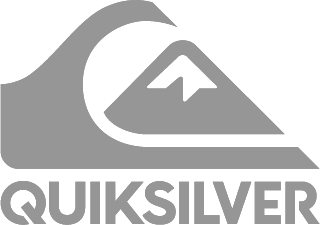Tips for Understanding Waterproof Ratings
by Jim O'Leary on Sep 13, 2019
Not Waterproof Just because an item is built for the outdoors does not mean it's built to be waterproof. Primarily this is done for items that aren't meant to be worn as outerwear, like layering pieces or casual clothes. But sometimes outerwear isn't designed to be waterproof, either for enhanced breathability or simply because the manufacturer doesn't think it's necessary.
But if you're looking for wet weather protection it's important to remember that "waterproof" is the only thing that means the garment is waterproof.
Weatherproof
This is a term generally used by lower-quality outdoor apparel manufacturers. It may provide more protection from rain or snow than standard everyday clothes, but it is by no means designed to provide the protection you should expect from proper outdoor clothing.
Water Repellent/Resistant
Water repellent or resistant materials provide some protection from wet conditions, but are not designed to completely protect you from moisture. Often times these technologies are used on outerwear designed for high-aerobic activities like running or cycling, where the farbic's breathability is more important than its ability to keep you dry.
Not that almost all waterproof outerwear will also have a Durable Water Repellent (DWR) treatment applied to the outer fabric, as it helps the waterproofing do its job by encouraging moisture to bead and run off your jacket more efficiently.

Ratings
Some outerwear, especially outerwear designed for snow, will tell you how waterproof they are using an industry testing practice known as a "standing water column." The short version is they put water on the fabric until the pressure pushes water through. The height of the water when it has enough pressure is then measured in millimeters, and the resulting rating lets you know how much protection you can expect.
Note that these numbers are usually paired with a second, often identical, rating for the breathability of the material. While they are almost always the same value, when they aren't the waterproof rating will always be listed first.
5,000-10,000mm
Affectionately called "snowproof," outerwear rated in this range can be expected to provide adequate protection from most winter weather conditions. It's not recommended if your primary precipitation is going to be rain, or if you're expecting to spend extended periods of time in contact with slushy snow.

15,000-20,000mm
The higher end of the snow apparel spectrum, apparel rated this highly will provide more than adequate protection in any winter weather scenario. In fact, depending on conditions and construction of the garment, they can even be expected to shrug off occasional rain without too much trouble.
25,000mm+
At this point, the apparel has all the protection you need from the worst wet weather imaginable. Perfect for even heavy rain, these garments will provide you with all the protection you need to stay comfortable no matter what the weather has in store.

Technologies
A lot of outerwear uses proprietary waterproof technologies, either of their own design or licenced from third-party companies that specialize in waterproof technology. Often times these materials will not have a rating, but you can rest assured that they will provide protection for even the heaviest rain, because that's what they're designed to do.
GORE-TEX®, eVent®, NeoShell® or Similar
These waterproof technologies are made by independent third-party companies, meaning you can find these same technologies in apparel from brands like The North Face, Arc'teryx, or Burton. That isn't to say that one jacket with this type of technology is the same as any other, just that you can expect the same high level of protection.
GORE-TEX® is the most popular of the third party waterproof technologies, and is the only one Guaranteed to Keep You Dry™. But eVent®, NeoShell®, and other competitors also provide excellent protection, often with claims of improved breathability.

DryVent™, H2No™, Omni-Dry™ or Similar
These "captive" technologies are unique to the brand that designed them. So for example only The North Face makes jackets with DryVent™, and if it's got Omni-Dry™ it's a Columbia.
These technologies provide very good protection against wet weather, and at a much lower price point than the licenced third-party technologies. If you're looking for a rain jacket, or all-purpose shell for any weather, these technologies should work fine.
That's a lot to process when you're shopping for outdoor apparel, but there are a few ways to simplify things. First, and most importantly, you should think about what you need. A pair of pants for snowboarding or skiing doesn't need the same level of protection as a jacket for a long hike on the Appalachian Trail, and understanding what you need will make it easier to know what technology or rating you want to look for. And it's also important to understand that waterproofing doesn't make something warm, we sell plenty of waterproof jackets designed for use in the summer.
But without a doubt the way to make things easier is to get in touch with the outdoor experts here at Peter Glenn, in store or online.

 Accessibility
Accessibility































